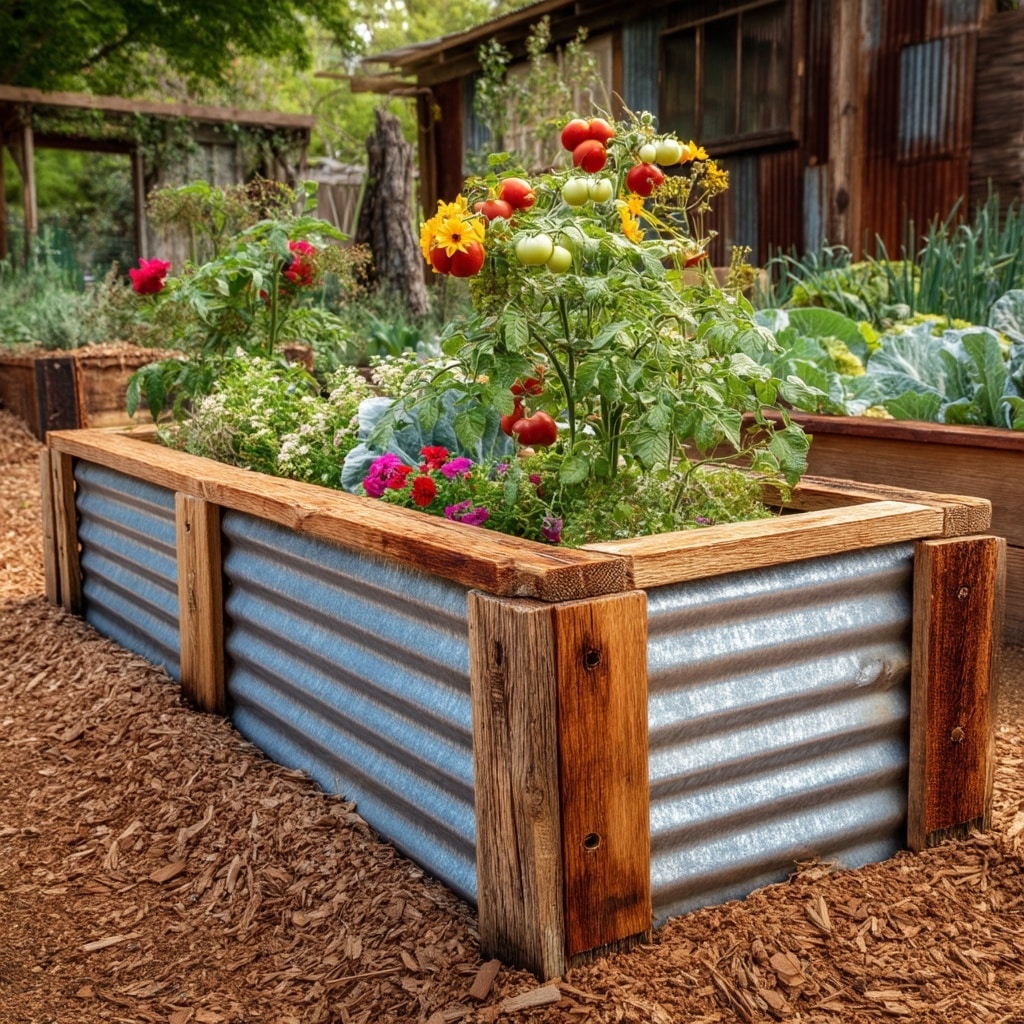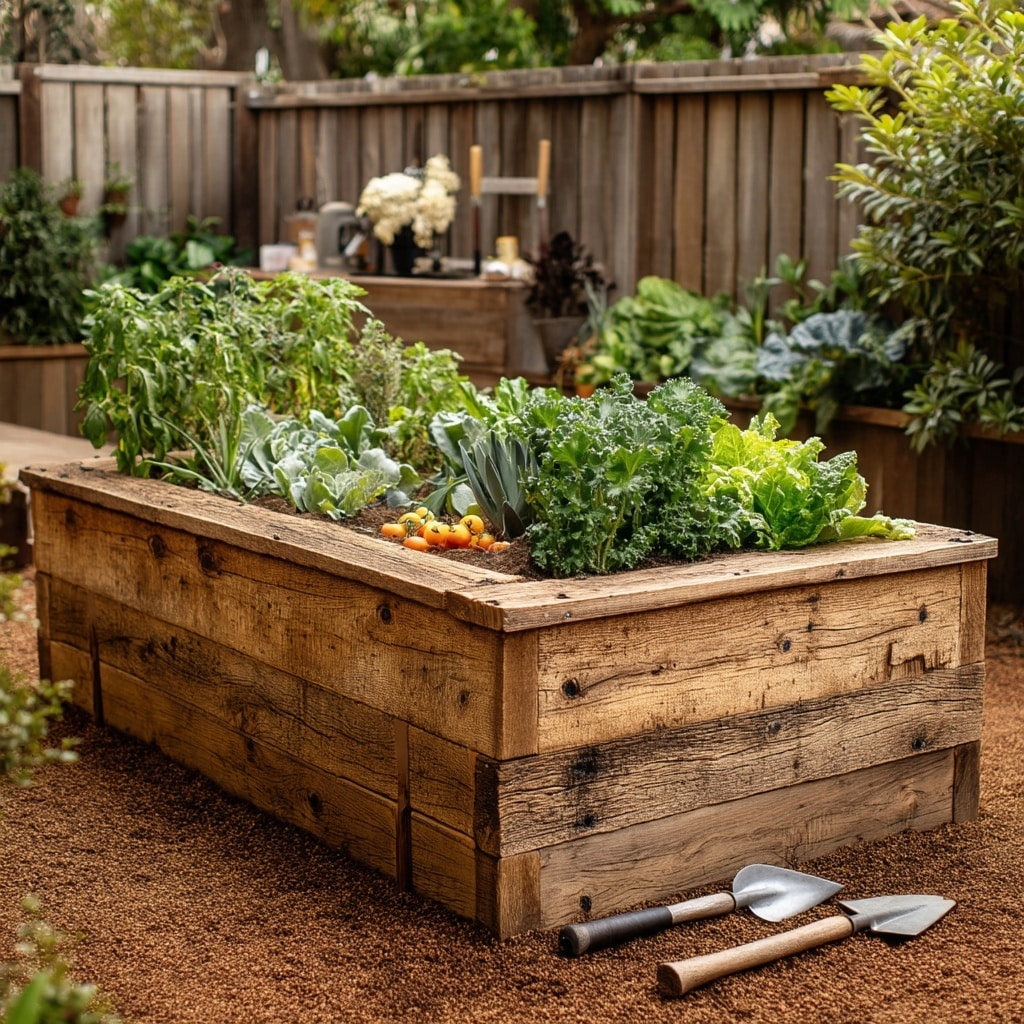Raised garden bed ideas are more than just a trendy DIY project—they’re a practical and rewarding way to improve your home garden. Whether you’re working with poor soil, limited space, or simply want a more organized layout, raised beds can solve many common gardening challenges. These customizable structures make planting, weeding, and harvesting easier, all while giving your garden a polished, intentional look.
Over the years, many gardeners—including myself—have discovered the advantages of raised beds firsthand. From boosting soil drainage to extending the growing season, raised garden beds offer benefits that traditional in-ground gardens just can’t match. If you’re ready to upgrade your gardening setup, this guide offers a collection of inspiring raised garden bed ideas suited for every budget, space, and skill level.
Table of Contents
DIY Raised Garden Bed – Cedar
If you’re looking for raised garden bed ideas that balance beauty, durability, and natural resistance to decay, cedar is a top-tier choice. This hardwood not only weathers outdoor elements well but also resists pests and rot without the need for chemical treatments—making it ideal for growing edible plants.
One of the best parts about using cedar is its versatility. Whether you’re building a simple 4’x4′ square or a longer 2’x8′ rectangular bed, cedar boards can be pre-cut at your local hardware store to eliminate the need for heavy tools. With just a drill, some framing angles, and sturdy screws, even first-time DIYers can assemble an attractive and long-lasting raised bed in an afternoon.
Pro Tips:
- Use 2-inch thick boards for extended lifespan and structural integrity.
- Avoid pressure-treated wood that can leach chemicals into your soil.
- For a clean, finished look, use framing angles or corner brackets—they add stability and save wear on the wood.
Cedar raised beds may cost slightly more upfront than pine or reclaimed lumber, but their longevity often makes them the more economical option over time. They’re also easily customizable with eco-friendly stains or sealers to match your garden’s aesthetic.
These beds are perfect for backyard vegetable gardens, flower beds, or even pollinator zones. Whether you’re planting tomatoes, lettuce, or herbs, cedar offers a solid foundation that will serve your garden well for many seasons.
Easy DIY Raised Garden Boxes
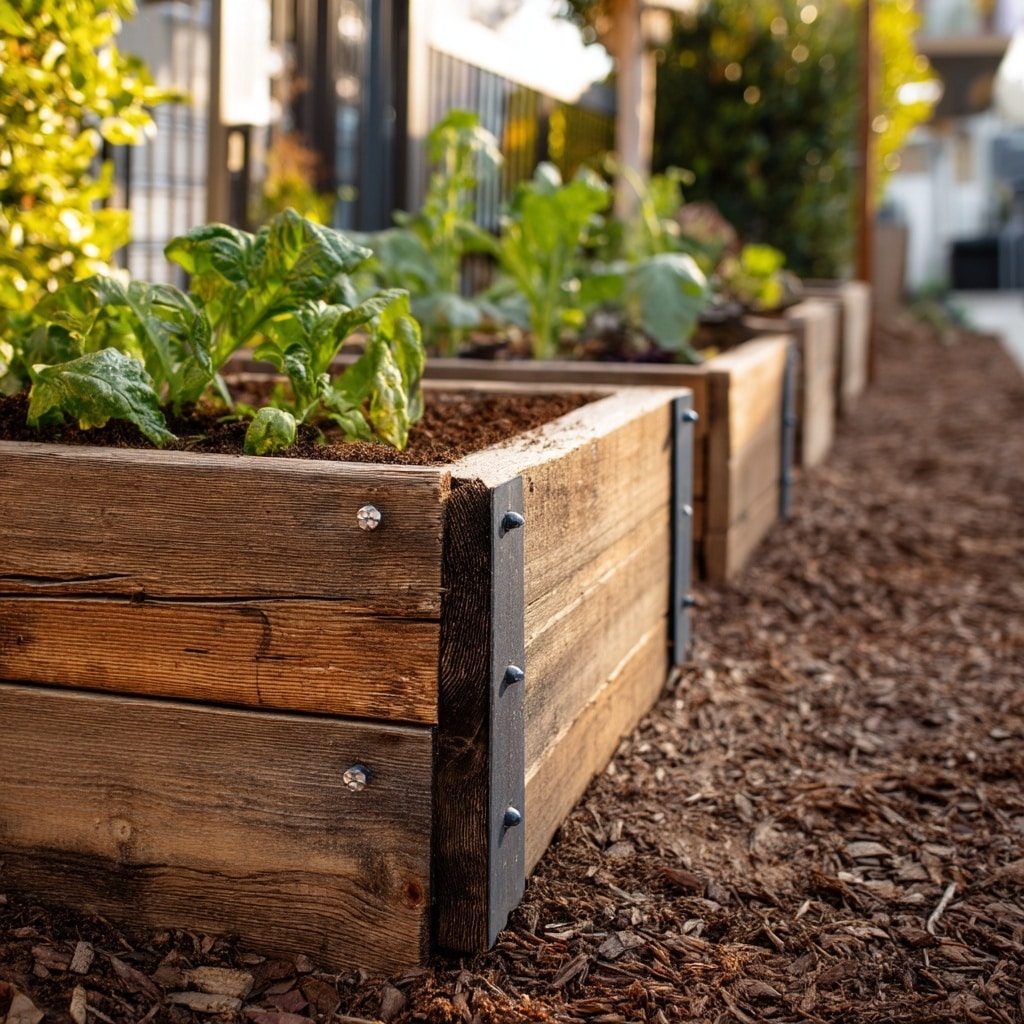
For gardeners who want the benefits of raised garden beds without the complexity of a full-scale build, easy DIY garden boxes are the perfect solution. These simplified structures are ideal if you’re short on time, tools, or carpentry skills—yet still want an attractive and productive garden setup.
One of the best raised garden bed ideas in this category involves using raised bed corner brackets. These metal or plastic corners allow you to slide in pre-cut boards, secure them with a few screws, and assemble a sturdy frame in minutes. It’s a great alternative for those who aren’t confident with power tools or precision cutting.
Smart Build Ideas:
- Powder-coated aluminum corners resist rust and provide clean edges.
- Planter blocks (like Oldcastle blocks) require no screws—just stack and plant.
- Modular kits come with adjustable sizing, making it easy to expand as your garden grows.
If you’re working with limited space or renting your home, these lightweight and modular beds are especially useful. They’re easy to move, break down, and reconfigure as needed. You can also create tiered layouts or cluster multiple small boxes together for a more dynamic garden design.
Even though these garden boxes are easier to assemble, it’s still important to select natural, untreated wood for food safety and durability. Look for cedar, cypress, or pine as affordable and accessible options.
This option proves that raised garden bed ideas don’t have to be complicated or costly—you can start simply and still grow abundantly.
DIY Raised Beds – Galvanized Tubs and Cattle Troughs
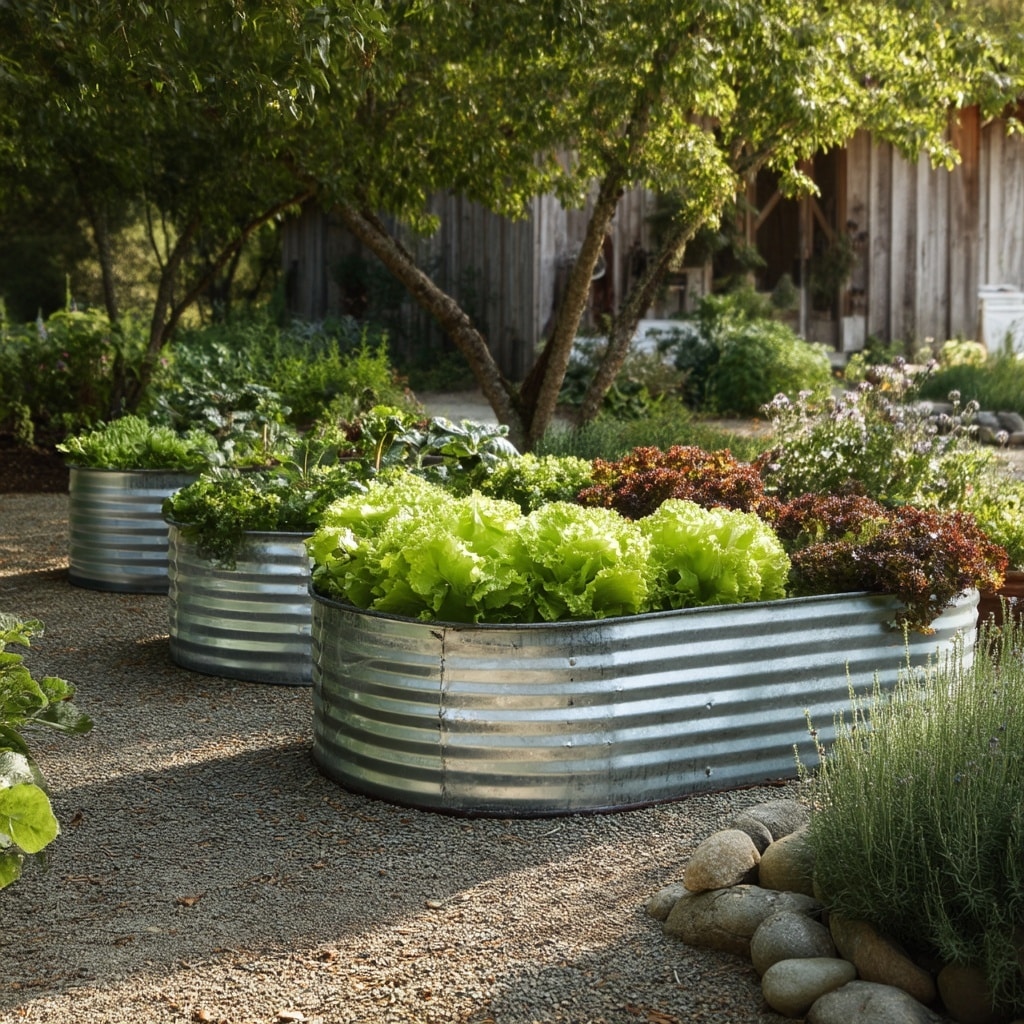
Among the more creative raised garden bed ideas, galvanized tubs and cattle troughs stand out for their durability, aesthetics, and ease of use. These ready-made containers are typically deep enough to support root vegetables and compact enough for patios, balconies, or small backyard corners.
Why gardeners love them:
- No building required – just drill a few drainage holes and fill with soil.
- Metal retains heat, helping soil warm earlier in spring and stay warmer in fall.
- Visually appealing – their industrial look complements modern or rustic garden styles.
To transform a cattle trough into a functional raised bed, begin by drilling drainage holes every few inches on the bottom. Without proper drainage, roots can rot and plants may struggle. For added convenience, many gardeners install casters with brakes on the bottom, turning a heavy trough into a mobile planter that can be repositioned with ease.
Keep in mind that galvanized metal can get hot under full sun, especially in warmer climates. Position these beds where they receive morning or partial afternoon sun to avoid overheating your soil. You can also line the interior with landscape fabric to buffer root zones from direct metal contact.
Whether you’re growing herbs, salad greens, or edible flowers, galvanized containers offer a low-maintenance, long-lasting solution with a high visual payoff.
DIY Raised Garden Box – Corrugated Metal
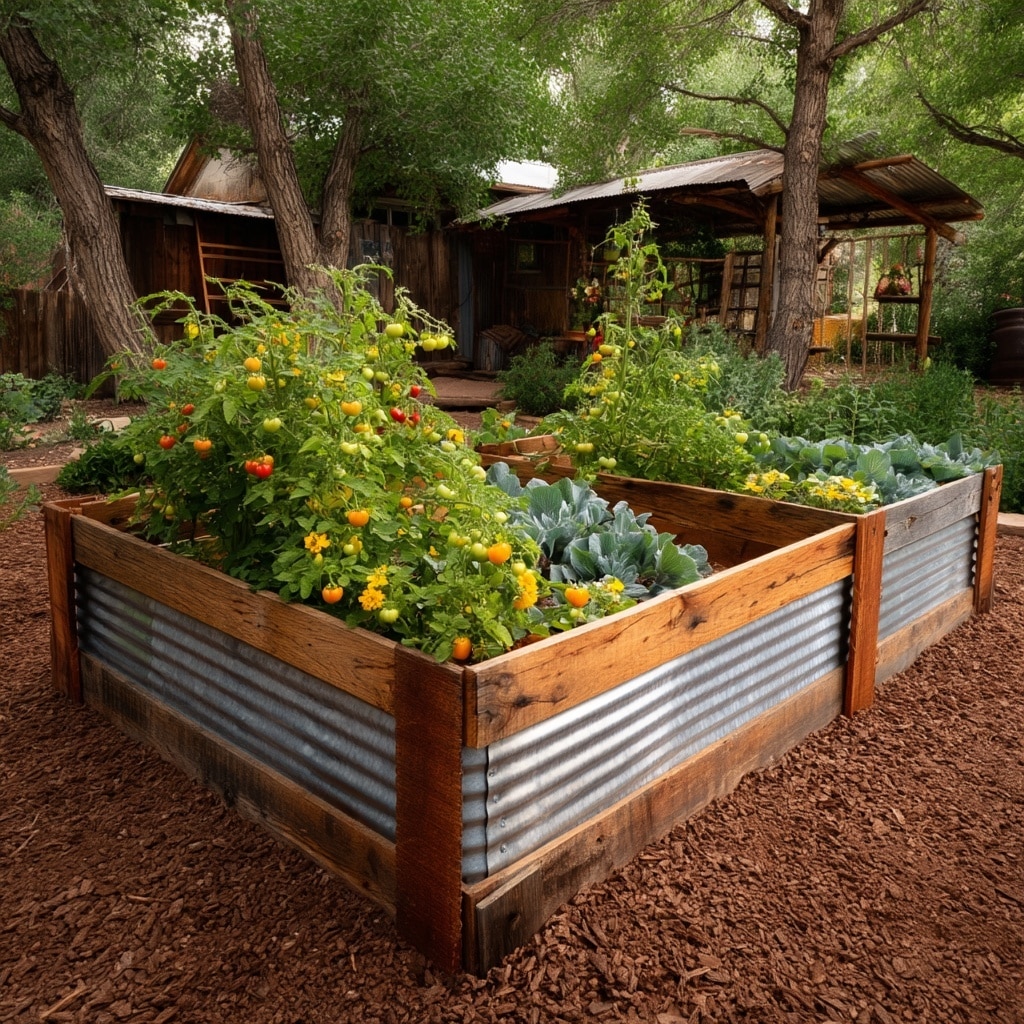
If you’re looking for raised garden bed ideas that combine rustic charm with durability, corrugated metal boxes might be your next weekend project. This style blends wood framing with metal panels to create a strong, stylish, and cost-effective alternative to all-wood beds—especially given the rising price of lumber.
Corrugated metal beds typically consist of an outer wooden frame with metal roofing panels inserted as the walls. This combination offers both strength and aesthetic appeal, especially for gardeners who enjoy a farmhouse or industrial look. It’s a smart way to stretch your budget without sacrificing stability.
Key construction tips:
- Use pressure-free wood for framing, such as cedar or cypress.
- Add internal supports to prevent the thin metal from bowing out.
- Top the bed with wooden trim for a polished, safe edge.
To simplify the process, some gardeners opt for reclaimed materials, like leftover metal roofing or barn siding. This can reduce costs while adding character to your garden. Others purchase pre-made kits with corrugated metal panels and food-safe powder coatings that ensure durability and non-toxicity.
If you want to skip wood entirely, consider cold-rolled galvanized steel beds designed specifically for gardening. These modular units assemble easily with bolts and washers and come in various heights and shapes to suit any garden layout.
Corrugated metal beds are ideal for gardeners who value style, structure, and smart material use. Plus, they’re built to last through years of planting and harvesting.
DIY Raised Garden Bed – Cinder Block or Brick
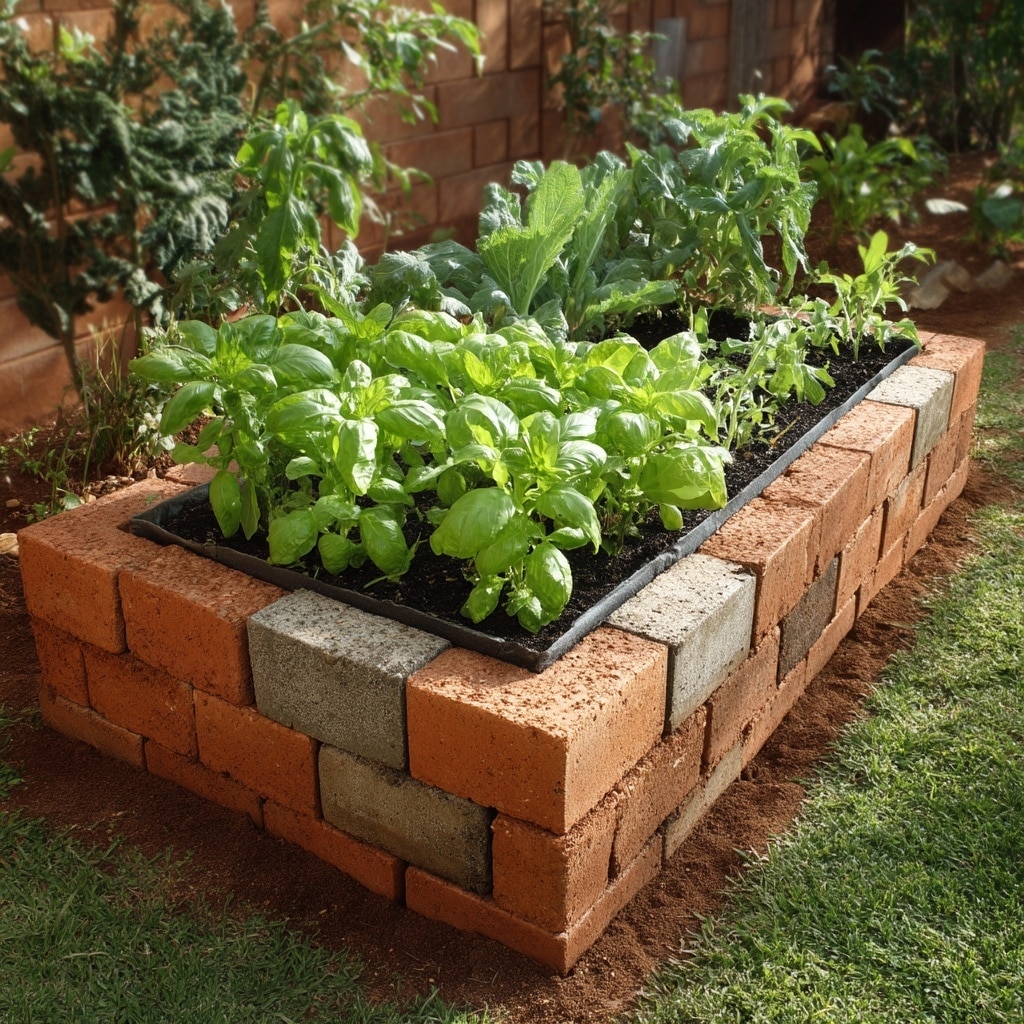
When it comes to sturdy, long-lasting raised garden bed ideas, few options rival the strength and permanence of cinder block or brick beds. These materials create a solid wall structure that can withstand the elements and look great in both traditional and modern garden designs.
Cinder blocks are especially popular due to their affordability and accessibility. You can find them at nearly any home improvement store, and stacking them requires no cutting, drilling, or special tools. Bricks offer a more polished, decorative appearance, although they usually require mortar for stability.
What to consider when using masonry materials:
- Always use new or food-safe blocks—older bricks or cinder may contain harmful residues.
- Level the ground thoroughly before stacking to ensure stability.
- Add a wooden top ledge to cover hollow block openings for a cleaner finish and extra seating space.
One of the cleverest uses of cinder blocks is planting herbs or flowers in the side holes, maximizing growing space. Just note that this works better for ornamental plants rather than edibles, since soil drainage and root space can be limited.
If you plan to go taller than three blocks high, consider using a sand-based mortar to secure the structure. For lower beds, a dry-stacked design on a level surface is usually sufficient.
These masonry beds are ideal for gardeners looking for a low-maintenance and virtually indestructible garden structure that adds texture and depth to the landscape.
Other DIY Raised Bed Ideas
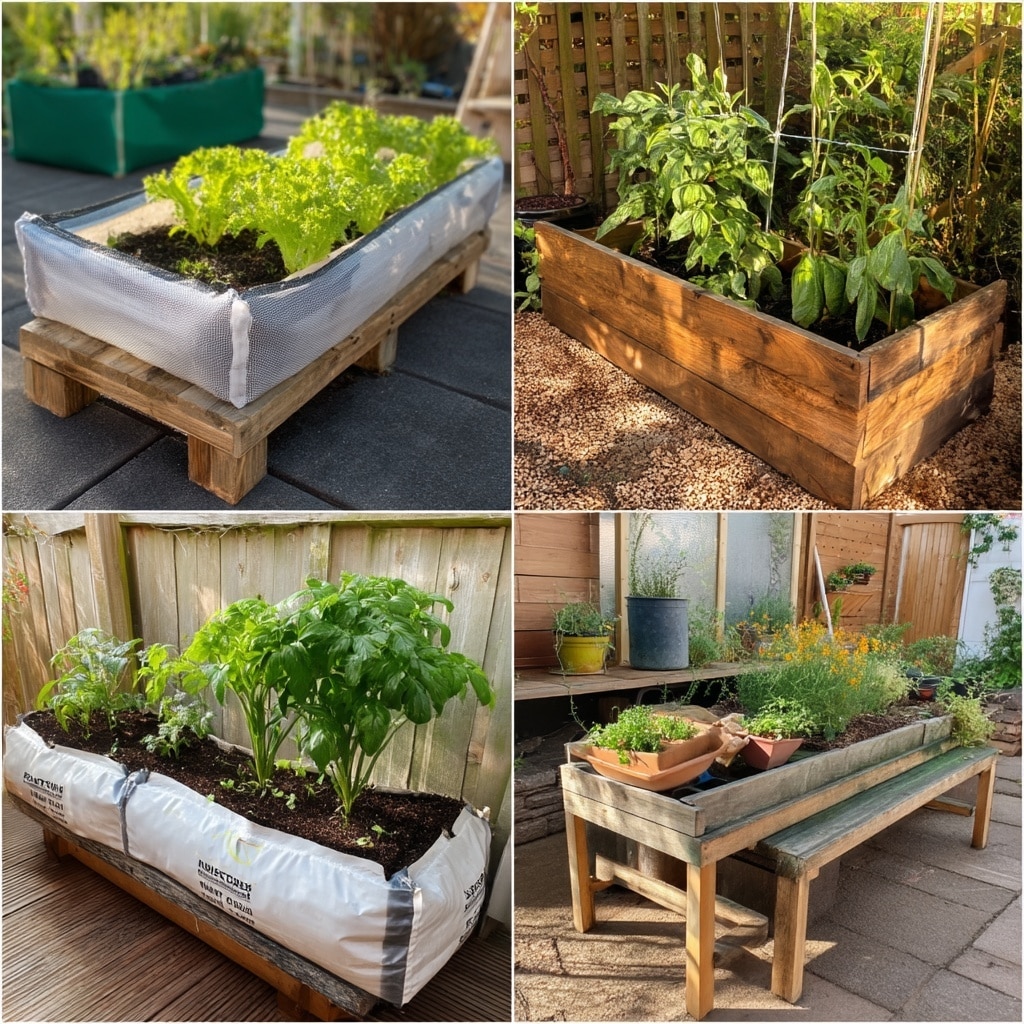
If you’re searching for flexible and creative raised garden bed ideas, there are plenty of alternatives beyond traditional wood and masonry. These options are perfect for gardeners with limited space, mobility concerns, or a desire for moveable setups that evolve with your needs.
Raised Garden Beds with Legs
Elevated beds offer a great solution for gardeners with back pain or limited mobility. By bringing plants to waist height, you can tend your garden while standing or sitting comfortably. These beds also help deter pests like rabbits and voles and make for a tidy patio or balcony setup.
You can purchase kits made from cedar or metal, or build your own using thick wooden planks, sturdy legs, and a strong base with drainage holes. Just make sure the structure can handle the weight of soil and plants when watered.
Cheap and Portable Garden Beds
Looking for something ultra-simple? Use grow bags, large plastic planters, or even repurposed containers placed on benches or plastic chairs. While not as permanent or attractive as other options, they’re incredibly convenient and allow you to test out raised bed gardening before committing.
These ideas are ideal for:
- Renters who can’t alter the landscape permanently
- Balcony gardeners
- First-timers on a tight budget
Modular and Stackable Beds
There are also stackable wooden or composite kits available online that let you build vertically or expand outward over time. This flexibility is great for gardeners who want to start small and scale their beds gradually.
These lesser-known ideas still deliver all the key benefits of raised beds: improved soil, easier maintenance, and efficient use of space.
Tips for Installing Raised Beds
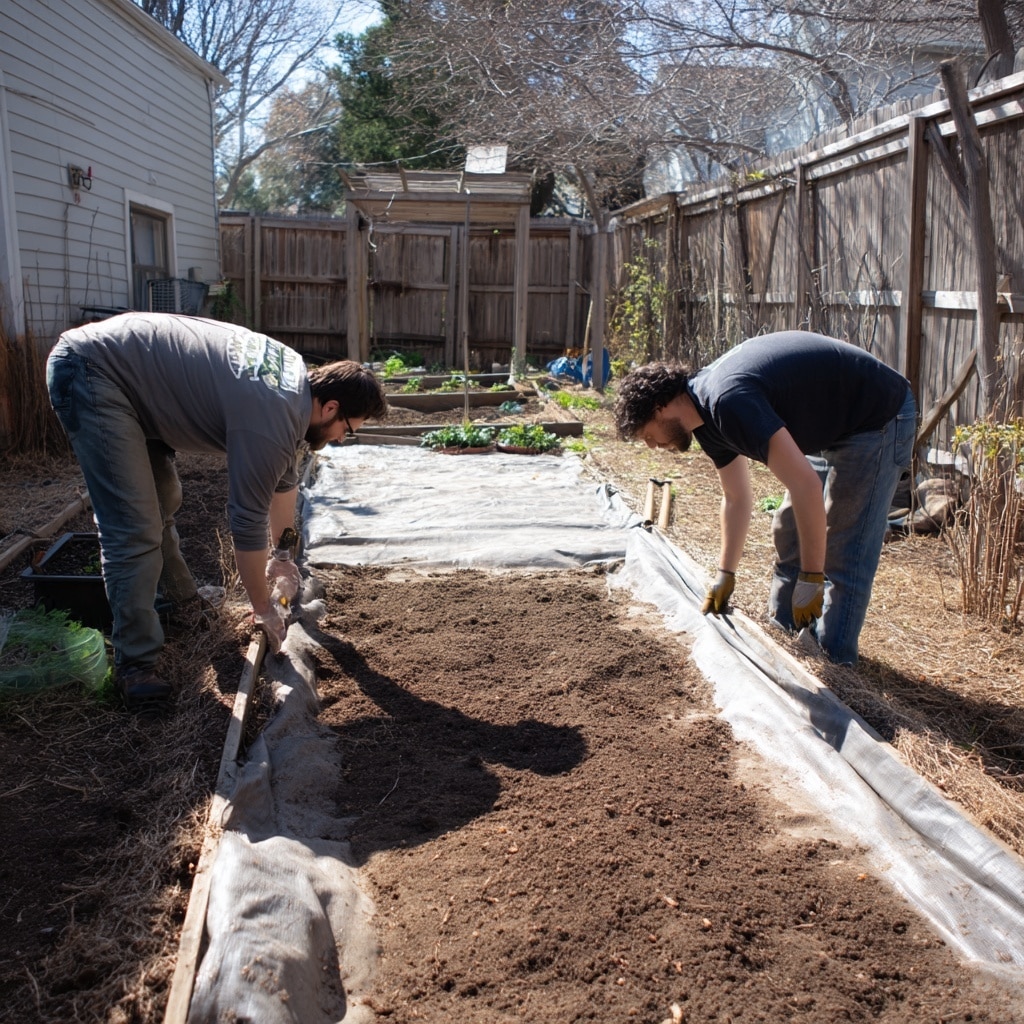
Choosing the right raised garden bed ideas is only half the journey—proper installation is what makes or breaks your garden’s success. A well-placed, properly built raised bed will save you time, prevent issues with water drainage, and create a thriving environment for your plants.
1. Pick the Perfect Spot
Your bed should get at least 6 to 8 hours of direct sunlight daily. Look for flat, open areas that are easy to access from all sides. Avoid low-lying spots where water collects after rain.
2. Prepare the Ground
For in-ground setups:
- Remove grass or weeds to prevent future overgrowth.
- Use a shovel to dig out and level uneven ground.
- Spread paver sand or gravel under the bed to improve drainage and create a solid base.
For container-style raised beds:
- Ensure the surface beneath is flat and can support the weight.
- Place protective mats or trays if indoors or on patios.
3. Line the Bottom
To prevent weeds or pests from creeping in:
- Use weed barrier fabric or landscape cloth on the bottom and sides.
- Add hardware cloth underneath if digging animals like moles are common.
4. Don’t Forget Drainage
If you’re using containers or raised beds with solid bottoms:
- Drill multiple drainage holes to prevent root rot.
- Raise the beds slightly using bricks or blocks for airflow underneath.
5. Use Quality Soil
This is where raised beds shine. Use a rich, organic mix of compost, loam, and sand. Avoid soil with peat moss if you want a more sustainable garden. Fill beds to within 1–2 inches of the top to allow for settling.
Taking the time to install your raised beds correctly ensures healthier plants and a more enjoyable gardening experience season after season.
Encouragement and Support + Conclusion
Creating a raised bed garden might feel like a big task at first, but with the right guidance and inspiration, it’s absolutely doable—even if you’ve never built anything before. The raised garden bed ideas we’ve explored here are meant to meet you where you are, whether you’re a first-time gardener or looking to upgrade your existing setup.
From classic cedar frames to inventive repurposed containers, there’s a solution for every budget, space, and aesthetic. The best part? You’re in control of how much you build, plant, and harvest. With raised beds, you create a garden that works for you—one that’s easier to manage, more productive, and truly enjoyable to maintain.
And remember, you don’t have to do it all alone. There are resources, tutorials, and even garden consultants available if you ever feel stuck. Gardening is a journey, and each raised bed you build is a step toward a healthier, more satisfying outdoor space.

